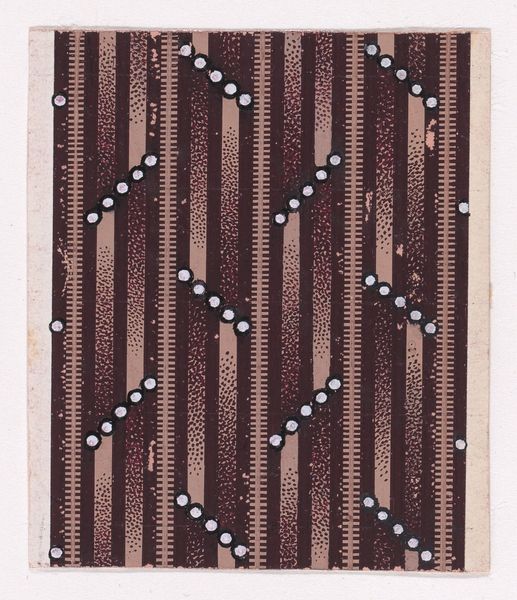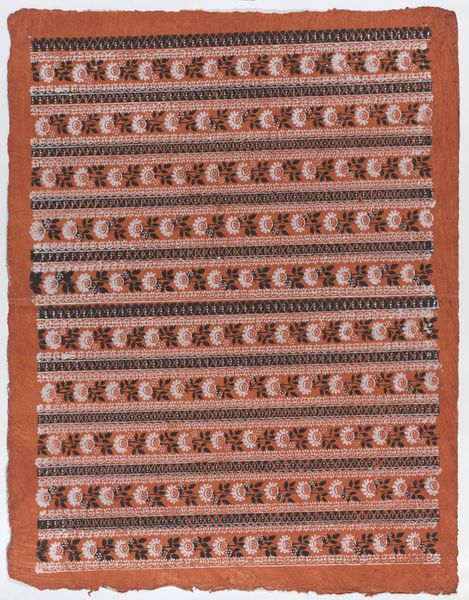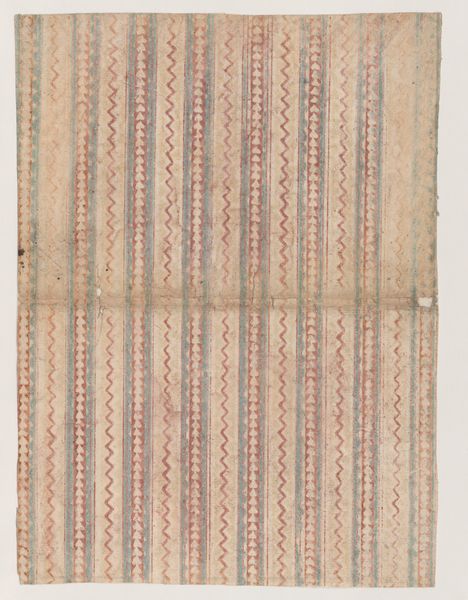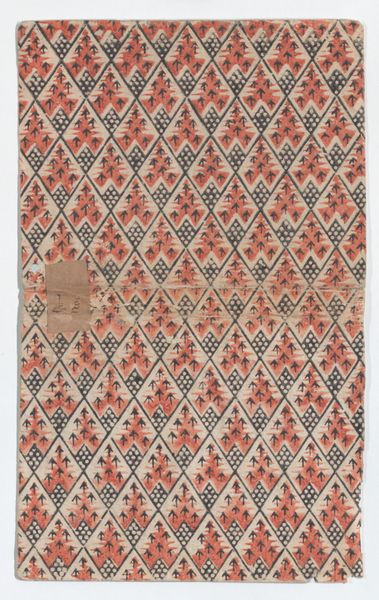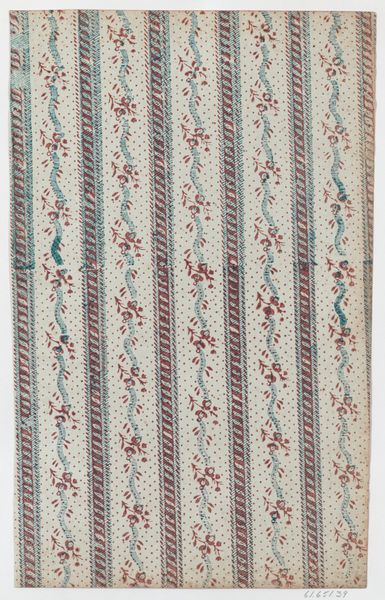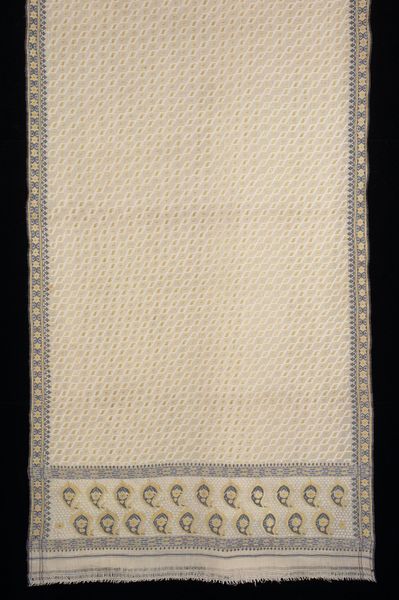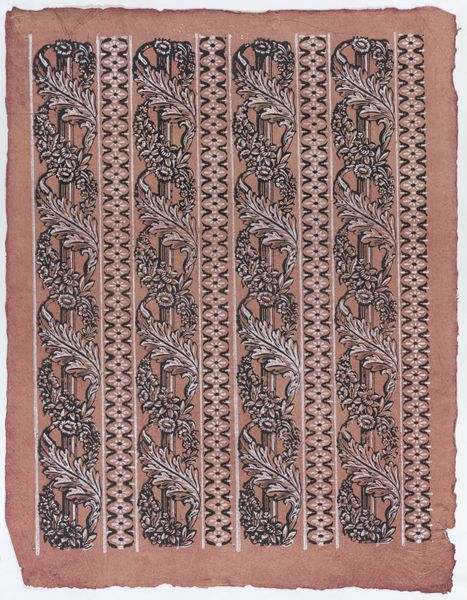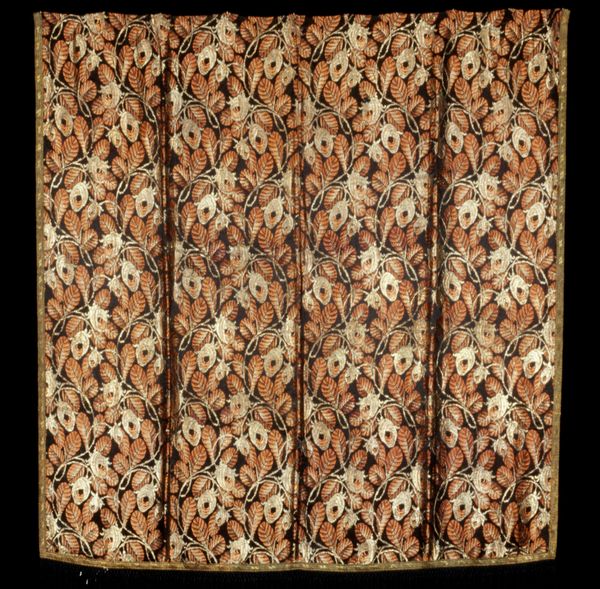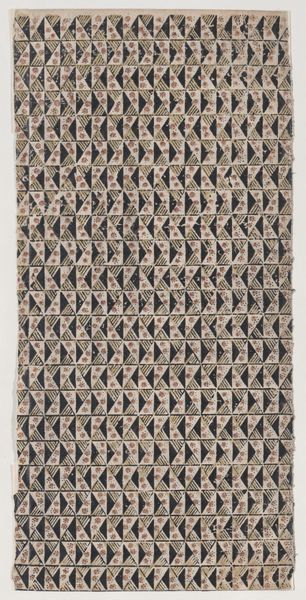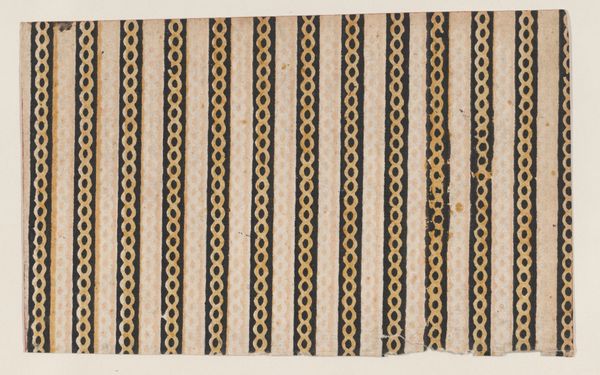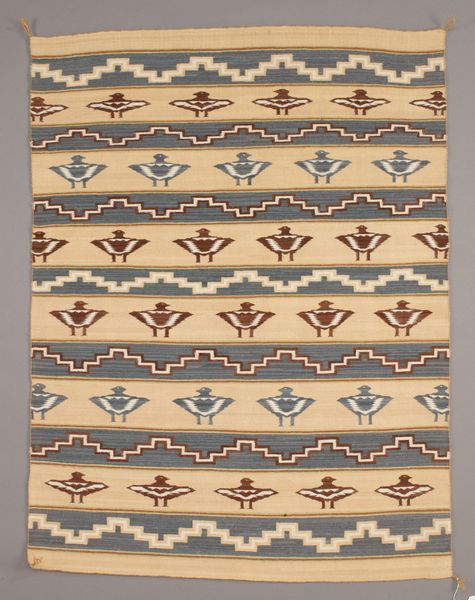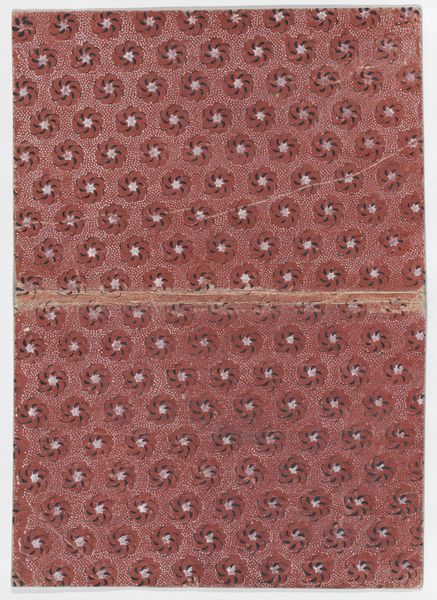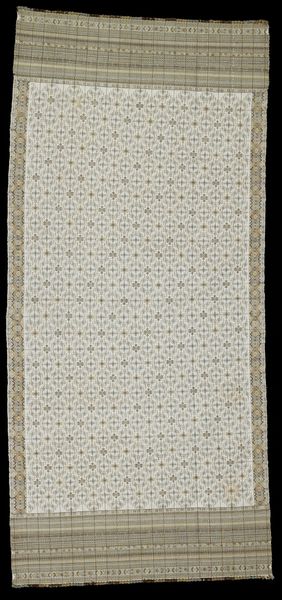
drawing, print, textile, watercolor
#
drawing
#
water colours
# print
#
textile
#
watercolor
#
geometric
#
textile design
#
decorative-art
#
watercolor
Dimensions: Sheet: 5 3/4 × 3 3/4 in. (14.6 × 9.6 cm)
Copyright: Public Domain
Curator: Immediately striking, isn't it? There's an understated elegance here. Editor: It reminds me of domesticity and constraint; the colors are quite muted, faded. The repetition creates a kind of enforced rhythm. Curator: This intriguing "Sheet with a striped and dot pattern" is attributed to an anonymous artist, created sometime between 1775 and 1875. It incorporates watercolor and possibly print techniques on textile or paper. We are fortunate to have it here from the Metropolitan Museum of Art. For me, seeing this piece, it connects directly with histories of labor and the domestic sphere, of course, given its likely purpose as a textile design. We need to remember those contexts, particularly given that the artist is unknown, potentially marginalized. Editor: The verticality is strong, creating an almost regimented structure. The dot and ‘tulip’ or ‘fleur-de-lis’ pattern, what symbolic resonance do they carry, especially within the domestic realm? Are these indicators of status or simply motifs popular at the time? Curator: Precisely. How do those motifs shape perceptions of identity, perhaps reinforcing societal norms of the era around gender roles, or potentially offering a space for subversive expression within a very defined creative space? The history of textiles is profoundly connected to those questions of identity and power dynamics. Editor: I keep returning to that central image—reminiscent of heraldic symbols adapted for common use. The cultural memory embedded in simple shapes can reveal surprising narratives, can’t they? Do you find the visual symmetry calming or oppressive? Curator: It’s a productive tension between comfort and constraint, something which reflects the ongoing battles for liberation and expression still relevant now. We bring these issues into present conversations through a study like this one. Editor: Seeing it this way underscores its continuing relevance. Curator: Absolutely. Looking closely invites reflection on our histories and continued relevance.
Comments
No comments
Be the first to comment and join the conversation on the ultimate creative platform.
